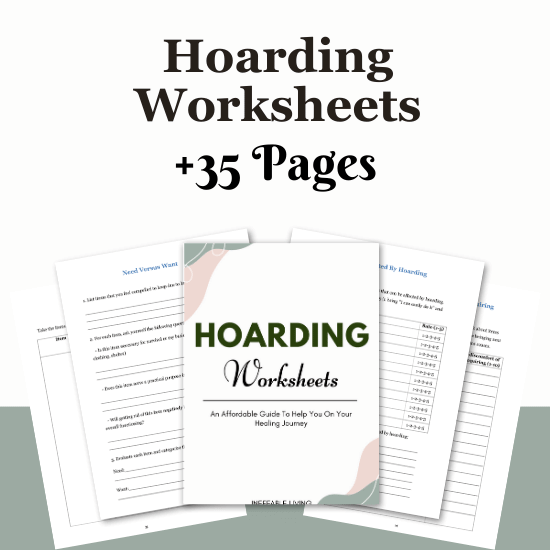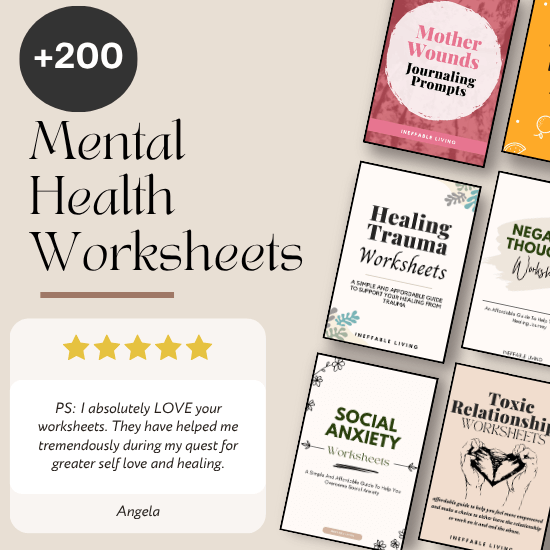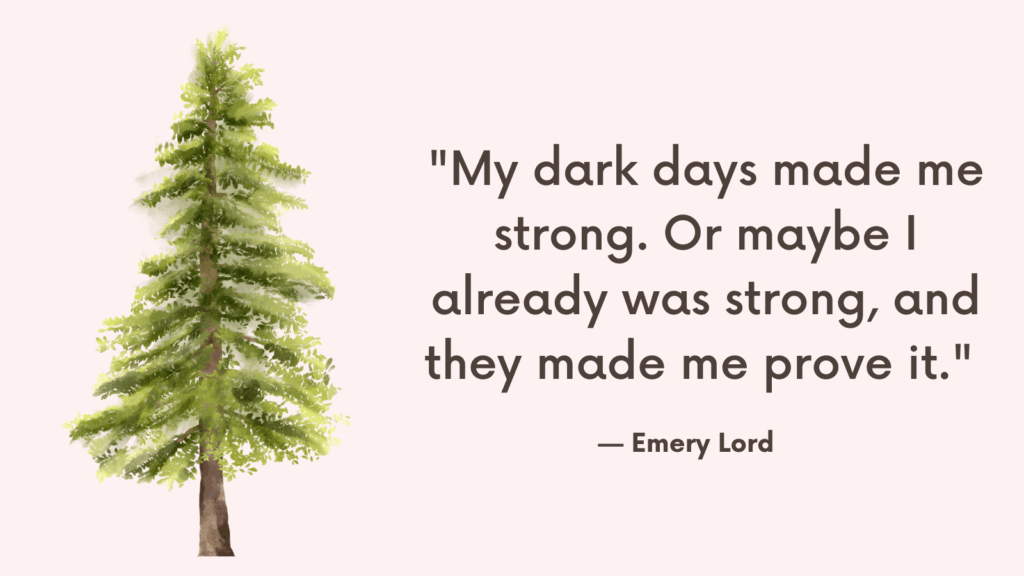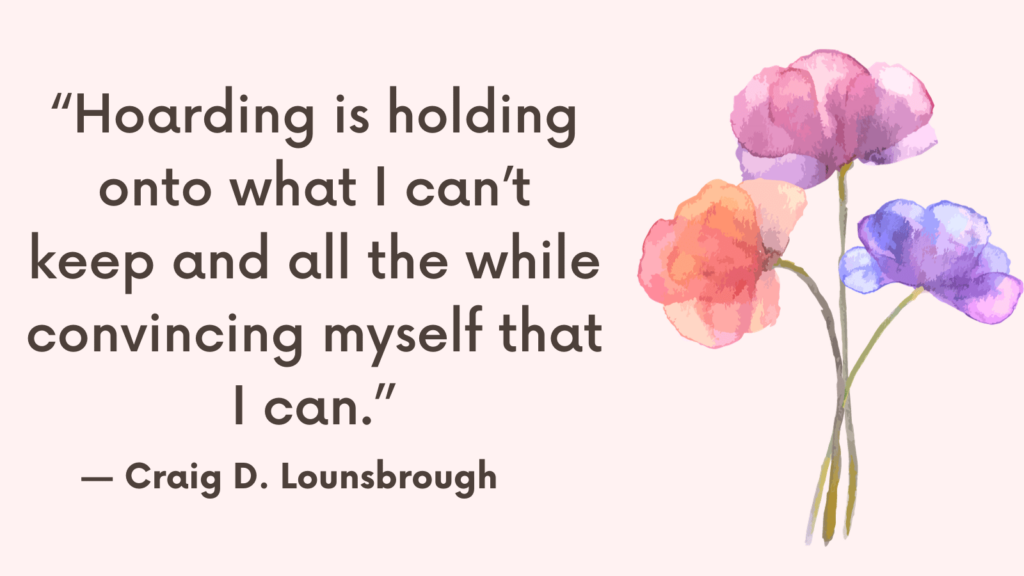Letting go of possessions when you’re living with hoarding tendencies isn’t just about “getting rid of stuff”—it’s about facing fear, loss, control, and often, deep emotional pain. The items aren’t just things; they’re memories, safety nets, or representations of identity. That’s why change begins not with bags and boxes, but with emotional readiness. Here’s how to gently build that readiness so letting go feels possible—and safe.
Why Letting Go Feels Emotionally Risky in Hoarding
Letting go of items might seem simple to someone without hoarding struggles — just toss it, donate it, or clean it up. But for someone with hoarding disorder, parting with even a single item can feel emotionally threatening. It’s not about being messy or attached to junk — it’s about emotional risk, fear, and unresolved pain.
Letting Go Feels Like Losing Control
For many who hoard, objects create a sense of order in a world that feels unpredictable. These items provide familiarity and control, even if the environment becomes overwhelming. Discarding something, no matter how small, can feel like inviting chaos or vulnerability.
Items Carry Emotional Safety
A pile of clothes might be tied to memories of a better time. A collection of books might symbolize intelligence or comfort. Even broken or unused items often represent safety — a buffer between the person and emotional distress. Letting go isn’t just decluttering — it can feel like losing a protective shield.
Fear of Regret Looms Large
“What if I need this later?” is not just a practical concern — it’s a source of anxiety. The fear of future regret can be paralyzing. For someone who has experienced scarcity, loss, or trauma, keeping items feels like staying prepared and protecting themselves from future pain.
Identity and Worth Become Tied to Belongings
Items can become symbols of identity — who someone was, who they hope to be, or how they want to be remembered. Letting go of something might feel like letting go of a dream, a memory, or a part of oneself. That kind of loss can feel like erasing proof that their life matters.
Overcoming Hoarding: How to Build Emotional Readiness to Let Go of Items?
1. Understand What the Item Represents Emotionally
Before discarding anything, ask:
“What does this item do for me emotionally?”
Does it offer comfort, identity, a memory, or a sense of control? Naming the emotional role helps you grieve, process, and begin to detach in a conscious, respectful way.
Related: 6 Common Types of Hoarding
2. Accept That Readiness Doesn’t Mean Feeling “Good” About It
You may never feel excited to let go—but that doesn’t mean you’re not ready. Readiness means you can face the discomfort and still move forward. Let “hard but doable” be enough.
3. Practice With Low-Stakes Items First
Start with things that carry less emotional weight—old receipts, expired food, broken electronics. Building trust with yourself through small decisions strengthens your capacity to handle bigger ones later.
4. Shift From “Losing” to “Choosing”
Instead of thinking “I’m losing this item,” try:
“I’m choosing space, safety, and clarity.”
This mental shift helps you feel in control rather than punished or deprived.
5. Talk to the Anxiety Directly
When panic rises, say internally:
“I feel anxious because I care. But I can let go and still be safe.”
Naming and soothing the fear makes it easier to stay with the process.
6. Use a “Holding Box” for Transitional Support
Place emotionally difficult items in a box labeled “Maybe Later.” Store it out of sight for 30–60 days. If you don’t need the contents—or don’t feel the same when you revisit—it may be time to let go.
Related: 8 Stages of Hoarding
7. Honor the Memory, Not the Object
Take a photo of items, write about them in a journal, or share a memory with someone you trust. Let the meaning live on, even if the item doesn’t.
8. Visualize the Freedom You’re Creating
Close your eyes and imagine the space you’re clearing—physically and emotionally. What will it feel like to walk through your home without shame, fear, or overwhelm? Let that vision motivate you.
9. Recognize That Grief Is Part of the Process
Letting go often brings up sadness, guilt, or grief. That doesn’t mean you’re doing it wrong—it means you’re doing the real work. Allow space to feel and heal.
10. Affirm Your Identity Beyond Your Possessions
You are not your things. Repeat to yourself:
“I am still whole without this.”
“I can let go and still keep who I am.”
Related: What Causes OCD to Flare Up? Top 10 Causes

Conclusion
Emotional readiness is not about rushing or reaching a “perfect mindset”—it’s about gently preparing your heart to make brave, loving decisions for yourself. The process may be painful, but it’s also liberating. You’re not just clearing space—you’re reclaiming your peace. One decision at a time.



